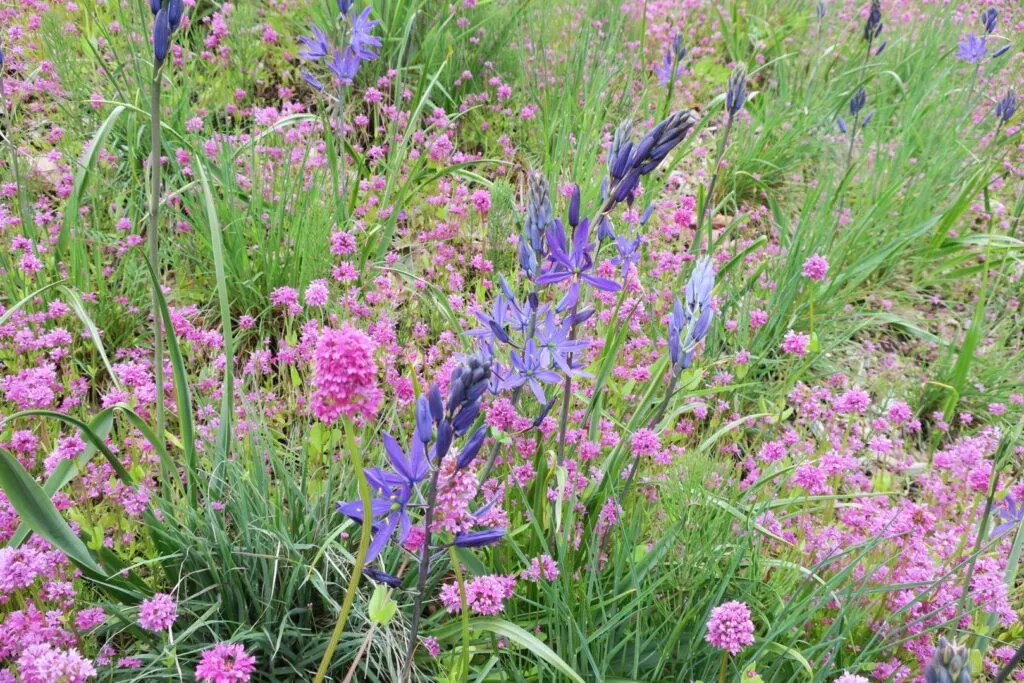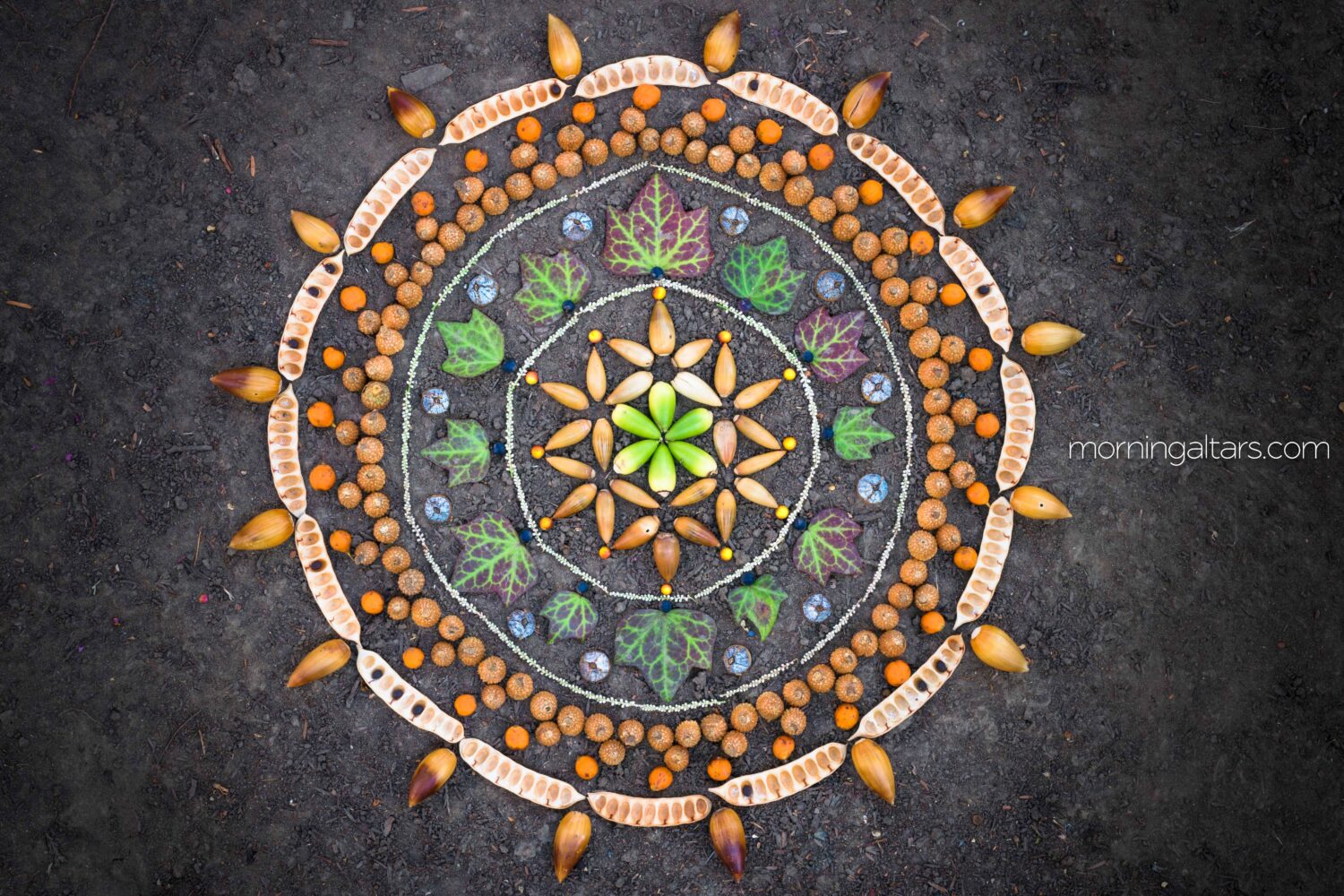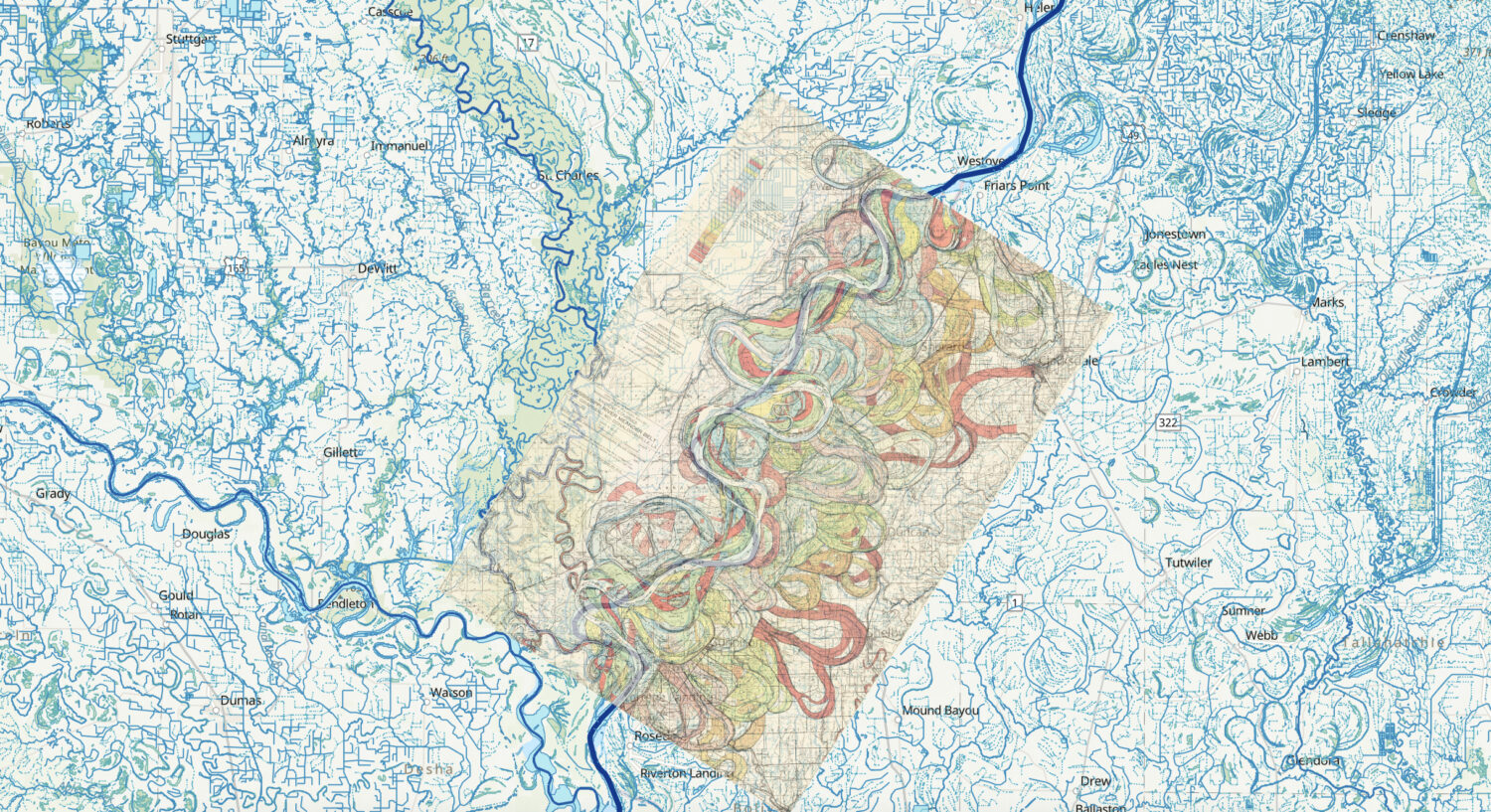You’ve Heard of Right-Plant, Right-Place: Now Add Right Maintenance
Jun 9, 2024
If you’re interested in planting design, ecological gardening or urban landscape design, you’ve probably come across some rather academic phrases. Like, building plant communities and novel ecosystems, plant sociability metics and more. These may seem like concepts that are out of your grasp, too intellectual or just aren’t applicable to you. But, I would venture that they’re easier and more useful than you think. Today, we'll combine a few of these ideas in an easy way, to help us see maintenance tasks in a new light.
The idea being, that if you are matching the plants that you choose to your specific site conditions (ie right-plant-right-place), you should also match up your maintenance practices. This ensures that over time, the plantings will keep a good balance, mostly relying on natural processes rather than constant human intervention to function well. Doing less work, in a more strategic way.
Assessing your maintenance tasks through the use of Plant Sociability Metrics is an interesting concept that I first heard from, Claudia West, at Phyto Studio. And although it takes a minute to sink in, once you get the hang of it, it really changes the way that you view gardening. Including what tasks you’re doing, when to do them and how to address all of those issues that pop up over time.
A Simple System Helps
There are several Plant Sociability Metrics, all seeking to organize sites and plants into categorizes based on existing site conditions and the specific plant strategies that are adapted to survive them. Today, we’ll be using the popular, Grimes C-S-R Triangle.
In this system, British ecologist, J Philip Grime, used three main characteristics to mark the corners of a triangle.
C- competitive
S- stressors
R - Ruderal (disturbance)
With each of the corners representing one characteristic at 100% of their power, and the rest of the triangle as varied percentages of each. Building a spectrum between one, two or all three of the attributes.
Really, it’s a system that allows you to visualize how things fit together in the wider context of an ecosystem. And, as a part of the regular succession cycle that occurs after a natural disturbance.

Placing Site Conditions & Plants Within the Triangle
Many of you may have already locked in this part in, so I’ll just give you an overview. It’s classic, right-plant right-place.
After a site assessment, you should have a pretty good idea of where you would place your conditions within the triangle.
C - nutrient rich soils and consistent moisture - enriched crop soils, areas with regular watering, fertilizing etc (the peak of fertility and nutrient availability)
S - extreme conditions - dry desert, standing water, extreme temperatures and/or light conditions (plants are working for nutrients and being strategic in their use)
R - disturbed soils - where large amounts of biomass have been removed (ie post fire, earthquake, flood etc), also roadsides, construction zones (where plants are rapidly collecting and using nutrients, securing them for future generations)
Once you’ve done this, you can make informed plant choices. Picking material that’s evolved special adaptions in order to survive and thrive in those specific site conditions. This means that you’re no longer attempting to fight the natural processes happening within your planting, but leaning into them. Building a plant community that should only need minimal care.
C - nutrient rich soils and consistent moisture = long-lived perennials
S - extreme conditions = short-lived or long-lived species with specialized adaptions
R - disturbed soils = short-lived opportunistic species, long-lived seed banks
Note: If you're unsure of where specific plants sit in the Triangle, Die Staudengärtuerei has a great online tool. It's in german, but google will translate easily. Here, they catalog plant material in a number of ways, including Grimes C-S-R strategy.

Placing Maintenance Tasks Within the Triangle
Now we can also add in our gardening tasks by asking ourselves a few questions and thinking through how they might sit within the triangle. And, then ultimately asking whether they match the site conditions and plant material that’s already there. In other words, will the tasks alter the conditions to the point where they are actually creating new issues.
I usually start with;
- What are we doing?
- Why are we doing it?
- How will this alter the conditions?
- Is there a better/different way to get the result that we want?
Take weeding for instance,
- Weeding
- to remove unwanted plants
- exposes soil = space for anything in the soil seed bank to germinate, soil erosion, loss of nutrients (a shift towards the R)
- topping plants (leaving root system in tact) = no soil disturbance while still removing the unwanted material.
In my mind, I would equate weeding with disturbance. Digging into the ground to remove plant material including roots, turning over and exposing the soil. So, I would place it closer the R corner of triangle. This disruption to the usual site conditions, not only has a negative effect on the plant material that you've chosen to plant but also encourages, opportunistic (short-lived and high seed producing) species to move in.
But, if weeding shifts the conditions to far into the Ruderal area, is there a way to discourage weeds without disturbing the soil?
Topping the plants also gets the job done, removing the weedy biomass and reducing the vigour of weeds. While the roots continue to protect the soil until more desirable material has a chance to out compete it.
Let’s try another, how about mulching,
- Mulching
- to protect exposed soil and prevent nutrient loss. To keep weeds down and help hold moisture in dry soils.
- Makes soil richer, more moisture retentive (a shift towards the C)= loss of tough short-lived perennials and annuals, encouraging perennials that require more care and inputs.
- use a cover crop or leave adapted plants to do their thing (ie go dormant in drought conditions) without added mulch.
Here, mulching shifts the conditions towards the C corner of the triangle. You're covering the soil surface with an extra layer of nutrient rich material. So, all of those tough plants that you've matched to more extreme conditions lose vigour (or possibly grow out of control due to a much higher nutrient level than they need) and less resilient species (that require more care to retain) begin to move in. So, how do we prevent that shift but still get some of the same benefits?
Depending on the existing conditions, a cover crop can still protect the soil from erosion or, possibly an inert mulch like crushed stone? But be sure to think through all of the possible ways that mulches of any kind can alter the conditions. Sometimes the most strategic choice is to do nothing. In other words, if your site is dry, let it be, and trust that either you have chosen well adapted plants that will survive without any major intervention or accept that you may have to experiment with other materials that will.
Here's where a few tasks might sit within Grimes Triangle:
Weeding = R
Mulching = C
Cultivating, Tilling = R
Watering = C (or S if it’s used to water)
Fertilizing = C
Pruning or cut back with biomass removal = S

Correcting Issues
If you think about it, this technique is also handy for fixing issues as they crop up. You can use the same kind of thought process in reverse, with a few more questions.
- What’s happening?
- How have the site conditions altered?
- What can we do to balance them and realign the triangle ratings?
For instance, an infestation of unwanted plant material.
- there’s a huge drift of weeds outcompeting the intended planting
- adding extra water during a dry summer shifted the conditions towards the C. This not only discourages the drought-tolerant species that matched the consistent site conditions, but encouraged moisture loving materials to dominate the space.
- so, if the extra water pushed it towards the C, we can rebalance by eliminating or limiting the water added, while topping the unwanted plants until the intended planting out competes them.
So, removing the excess water pushes us away from the C. Discouraging the C-loving weeds while encouraging the chosen plant material. Also topping the weeds, (and removing the biomass and seeding structures), limits their vigour and reproduction without any additional disturbance of the soil (keeping us away from the R, creating new problems).

A New Tool
So what it all comes down to, is that academic concepts like the Grimes Triangle can help us visualize how what we’re doing as gardeners can alter site conditions. They’re a fantastic tool to raise awareness and encourage a more thoughtful approach to what we’re doing. To help us anticipate the longterm outcomes of our regular gardening practices, limiting issues and building healthy soils and plant communities (that don't require constant human interaction).
So, the next time that you match your site conditions with appropriate plant material, try adding in your maintenance tasks too. A few small changes can make a huge difference in the long run. After all what good is setting up a low maintenance green space if you negate it with your actions? Why not spend time enjoying gardens rather than feeling frustrated by them?
As always, have fun out there, don't be afraid to experiment and enjoy your green spaces!
Sara-Jane @ Virens Studio
Virens is an ecological landscape and planting design studio, located in Vancouver, Canada. Get in touch today for a consultation. And, don't forget to follow us on IG and Substack
© Virens Studio 2023 (all photos are used for demonstration purposes and do not necessarily belong to us.)
aka Garry Oak Ecosystem aka White Oak, Oregon Oak or Oregon White Oak There’s nothing quite like British Columbia’s coastal Garry oak ecosystem in the spring; a softly undulating dreamscape of purply-blue Camassia punctuated by low twisted oaks and mossy boulders. It’s beauty can be overwhelming. But this landscape doesn’t exist in a vacuum, it…
Canada’s Blue Camas Meadows: A Story of Plant+Human Co-Evolution
Working with plants has so many innately therapeutic benefits that a lot of other careers lack. But, one thing that I’ve learned over the last few years is that no one, and no profession is immune to Workplace PTSD. Now, I know what you may be thinking, “PTSD seems extreme”, Or perhaps, “this stuff sounds…
I got Sucker Punched by Workplace PTSD, How About You?
I may not be a certified cartophile, but I do use maps often in my practice as a landscape designer. Where and how water flows through the land can be difficult to comprehend without one. Plus, they’re not only fascinating and informative, but at times quite beautiful. Particularly impressive are the maps of the Mississippi…



